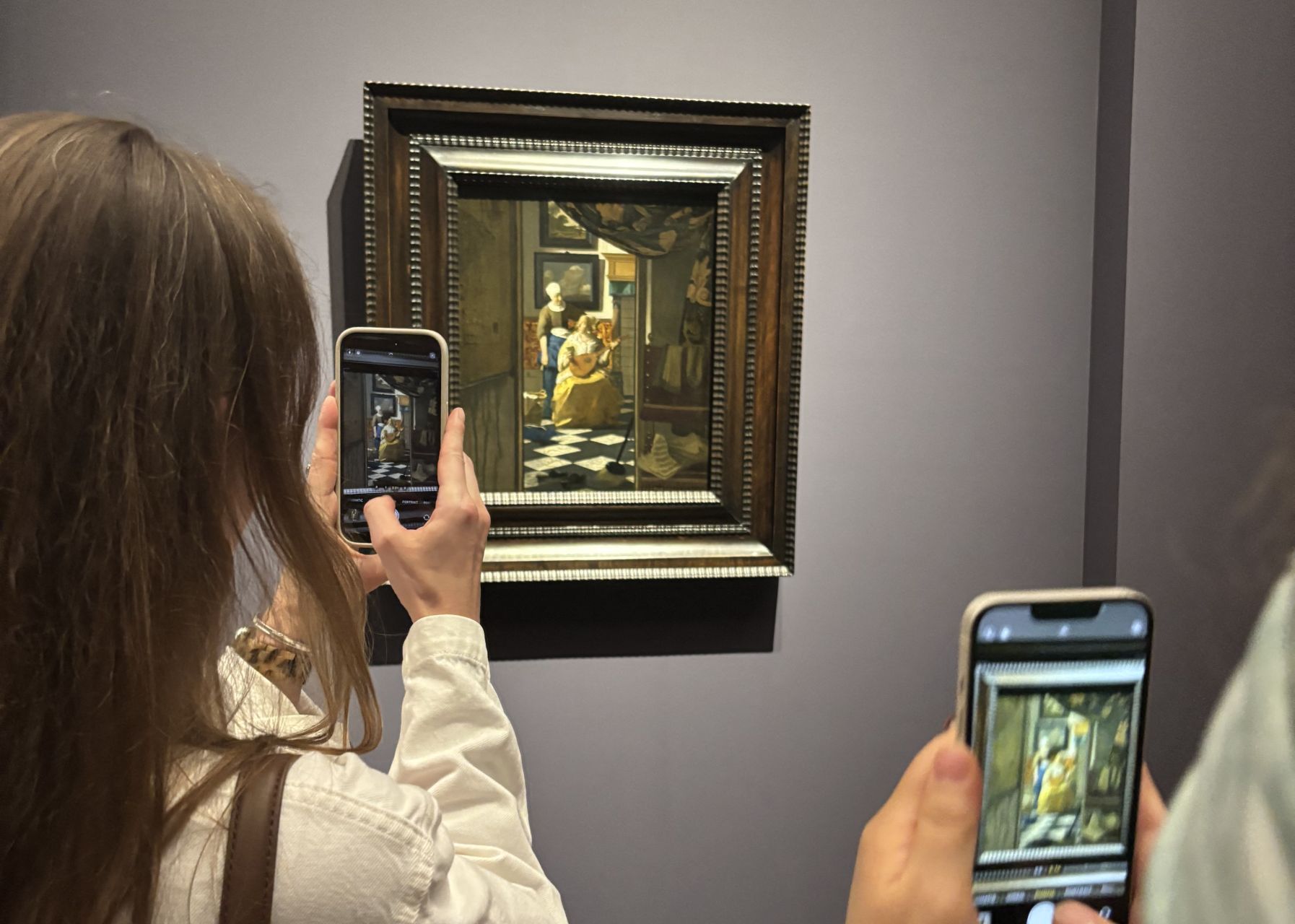
New York’s Frick Collection brings together three rare Vermeer masterpieces in an intimate exhibition centered on love, secrecy, and the written word. Through quiet gestures and the overlooked presence of servants, the show explores the emotional intensity of epistolary romance in the 17th century.
An exhibition featuring just three paintings? That’s the bold choice made by New York’s Frick Collection, which has gathered a trio of 17th-century Dutch master Johannes Vermeer’s works—all linked by themes of hidden romance and emotional exchange.
The museum’s founder, industrialist Henry Frick, purchased Mistress and Maid in 1919, a celebrated painting by the artist often called the “Sphinx of Delft.” For this new show, two additional works have been borrowed: Woman Writing a Letter, with her Maid from the National Gallery of Ireland, and The Love Letter from Amsterdam’s Rijksmuseum.
These are three of only six Vermeer paintings known to focus on reading, writing, or the exchange of letters—at a time when letter-writing was a peak form of communication and creative expression.
All three paintings include a figure Vermeer often cast as “secondary”: the maid. But here she plays a key role, becoming an intermediary between the mistress—who is likely engaged in a secret relationship—and the letter’s sender or recipient, says curator Robert Fucci.
In a Europe where upper-class women were gaining more freedom to choose their lovers, domestic servants often witnessed these private romantic dramas and served as trusted go-betweens. This epistolary art of seduction, Fucci notes, was something maids were both part of and silent witnesses to.
“What Vermeer captures so brilliantly is that charged feeling of waiting, of anticipation—the kind we can still relate to today,” Fucci adds, drawing a modern parallel to dating apps, where millions anxiously await a reply from someone they’ve “liked.”
Debt
Though each work differs in scale, action, and perspective, together they form what the curators call “enigmatic narratives,” a hallmark of Vermeer’s storytelling style. The exhibition runs through the end of August, housed in the newly reopened Frick mansion.
After five years of renovations costing about $330 million, the Frick reopened in April with ten new galleries on the second floor, in what used to be the private bedrooms of the Frick family, who made their fortune in coal and steel.
Two of the featured works—The Love Letter and Woman Writing a Letter, with her Maid—may have held deep personal meaning for Vermeer’s wife, Catharina Bolnes. Left widowed with eleven children after the artist’s death, she reportedly used these paintings to settle a debt with the local baker, hoping one day to reclaim them—works now worth a fortune.
Love Letters from Vermeer marks the first Vermeer-focused exhibition in New York since 2001, and the first original show organized by the Frick since its reopening. It stands in stark contrast to the record-breaking Vermeer retrospective of 2023, which brought together 28 of the artist’s roughly 30 surviving works at Amsterdam’s Rijksmuseum, including The Milkmaid and Girl with a Pearl Earring.
But for Frick curator Aimee Ng, there’s no question about the Dutch master’s enduring appeal: “Vermeer still captivates and inspires audiences today.”
By Ana FERNÁNDEZ / AFP

Comments